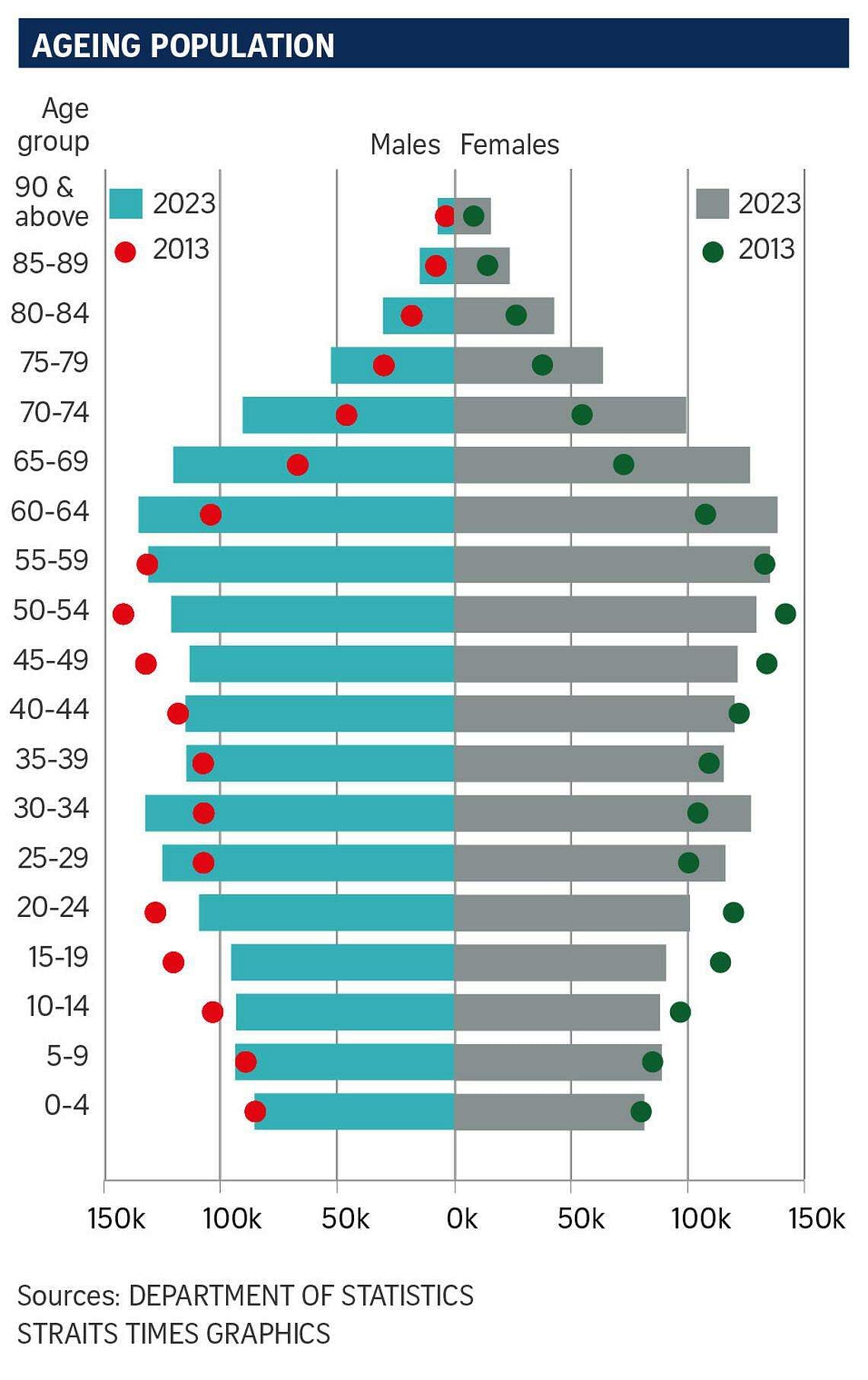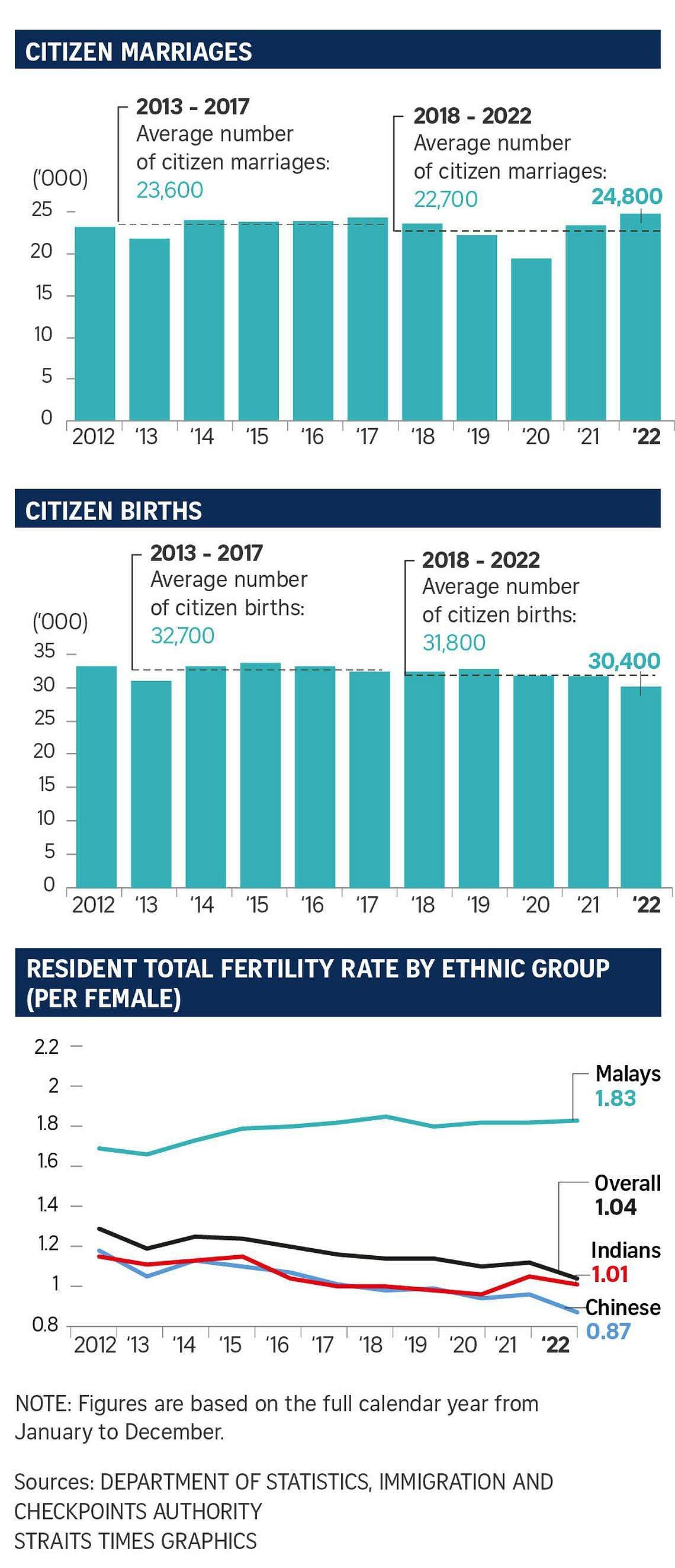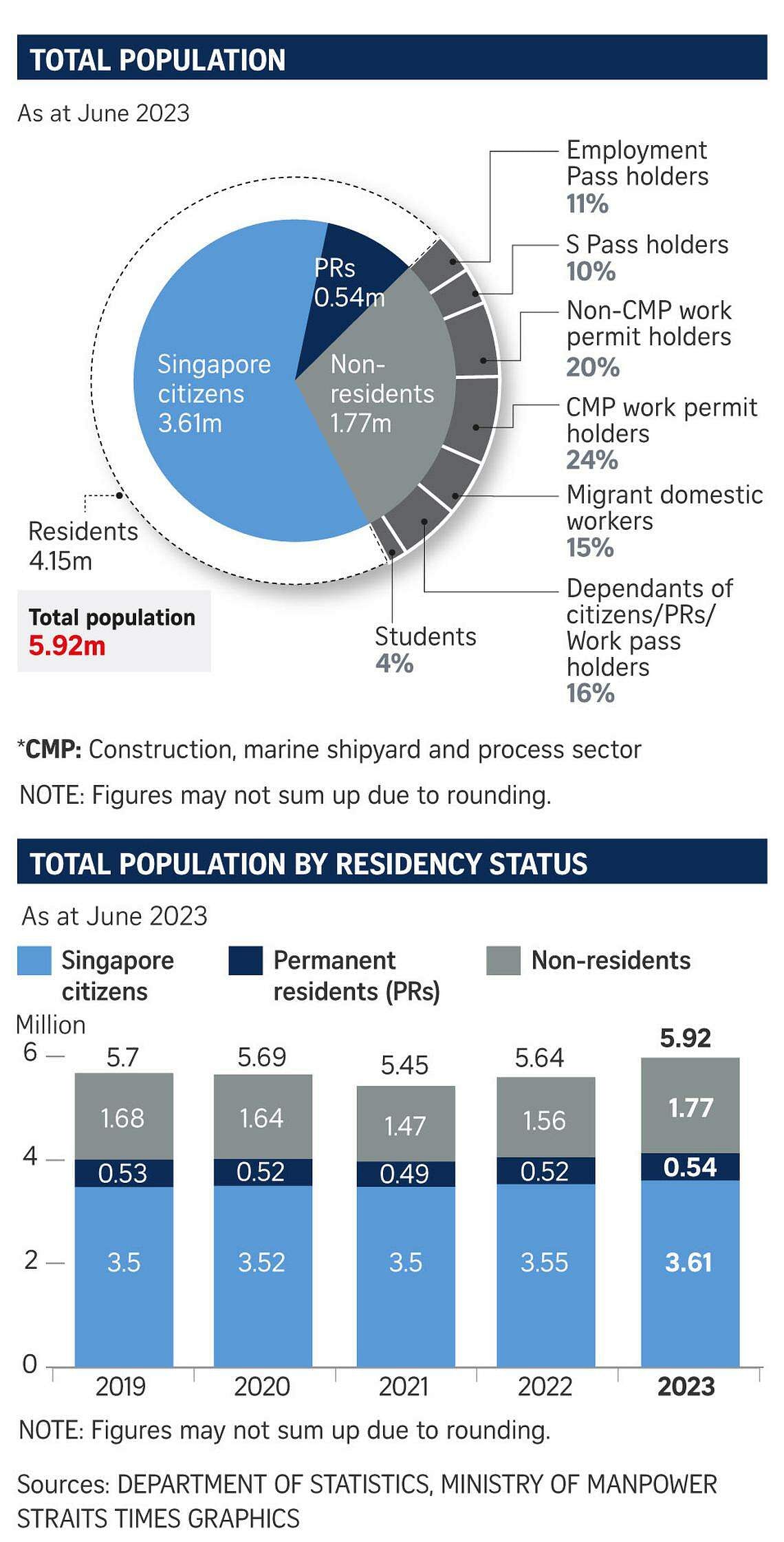SINGAPORE – A record number of couples tied the knot in 2022, continuing an upward trend of marriages for the second year in a row since 2020, when the Covid-19 pandemic scuppered wedding plans. At the same time, given fewer births and longer life expectancies, Singapore’s population continues to age rapidly.
The proportion of citizens aged 65 and above is rising at a faster pace compared with the last decade. From 11.7 per cent in 2013, it spiked to 19.1 per cent in 2023, according to the Government’s annual Population in Brief report released on Friday. By 2030, around one in four citizens, or 24.1 per cent, will be aged 65 and above.
The report by the National Population and Talent Division said large cohorts of “baby boomers” – those born between 1946 and 1964 – have begun entering the post-65 age range.
These individuals would be aged between 59 and 77 in 2023.

Meanwhile, 24,767 citizen marriages took place in 2022, up from 23,433 in 2021, possibly due to couples resuming their wedding plans after disruptions caused by the pandemic.
But the annual average number of citizen marriages in the last five years, at 22,700, remained lower than that of the preceding five years, which was 23,600.
The median age at first marriage for citizen grooms and brides was 30.5 and 28.8 years in 2022, up from 30.1 and 27.7 years in 2012.
There were 30,429 citizen births in 2022, down 4 per cent from 31,713 in 2021, with the resident total fertility rate (TFR) reaching a historic low of 1.04 in 2022.
The report said the decline in 2022 coincided with the Year of the Tiger in the Chinese lunar calendar, which is generally associated with lower births among the Chinese.

The resident TFR for Chinese dropped from 0.96 in 2021 to 0.87 in 2022. Among the Indians, there was also a slight dip from 1.05 in 2021 to 1.01 in 2022, while the figure for Malays inched upwards from 1.82 to 1.83.
With the easing of Covid-19 travel restrictions, more citizens and permanent residents (PRs) living overseas returned to Singapore.
Overall, Singapore’s total population stood at 5.92 million as at June 2023, rising by 5 per cent from June 2022.
The report said the average total population growth rate over the past five years was comparable to the preceding five-year period, taking into account the decline in total population in 2020 and 2021 amid the Covid-19 pandemic.
The citizen population grew by 1.6 per cent to 3.61 million in June 2023, from 3.55 million in June 2022; while the number of PRs rose by 3.7 per cent, from 0.52 million to 0.54 million, in the same time period.
The non-resident population also increased by 13.1 per cent, from 1.56 million in June 2022 to 1.77 million in June 2023, largely due to foreign employment growth.
This was seen across all pass types, with the largest increase coming from work permit holders in the construction, marine shipyard and process sectors, as contractors hired more workers to catch up on projects that were delayed by Covid-19.

The report said the pace of immigration continues to be measured and stable. In 2022, 23,082 people were granted citizenship and 34,493 people were granted permanent residency.
These numbers are slightly higher than in 2019, due to easing of travel restrictions and safe management measures, which allowed individuals to complete processes that had to be done in person.
Singapore Management University sociology professor Paulin Straughan said preparing for an ageing society is “not all doom and gloom”. Rather, it should include a rethink of how to take advantage of extended longevity, whether it is in terms of employment, education and lifelong learning, or having enough for retirement, she said. At the same time, the declining TFR and emergence of Dinks (couples with double income, no kids) and singles either by choice or circumstance have contributed to changing family dynamics, she said.
“For instance, this potentially affects caregiving, especially in eldercare,” said Prof Straughan, adding that more attention must be paid to the aspirations and needs of the growing number of singles.


